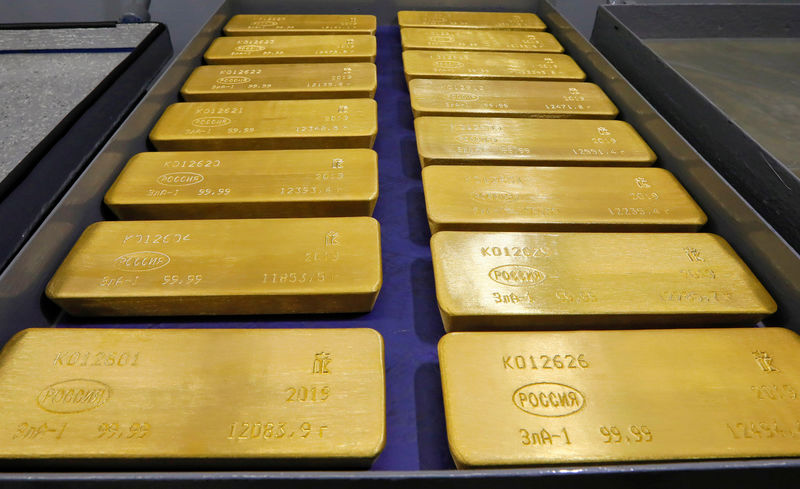2024 has seen gold prices surge to new record levels, with the yellow metal exceeding $2,400 an ounce last month due to increased global demand amid economic and geopolitical uncertainties.
Remarkably, strategists at Goldman Sachs (NYSE:GS) believe there’s even more upside room for the safe-haven metal, saying it could potentially exceed $3,000 by year’s end.
Gold prices rally on geopolitical unrest, central bank demand
One of the primary drivers of this price rally is the strong demand for gold from global central banks and Asian households.
In China, economic recovery challenges post-pandemic and a depreciating yuan, which has lost about 5% against the US dollar over the past year, make gold even more costly for local consumers.
Despite this, both Chinese consumers and the People's Bank of China (PBOC) continue to pursue gold avidly.
The PBOC has increased its gold reserves for 17 consecutive months, with a 16% rise in its gold holdings during this period, as reported by the World Gold Council. In March alone, the PBOC added 160,000 ounces of gold to its reserves.
Similarly, countries like Turkey, India, Kazakhstan, and some in Eastern Europe have been active gold buyers this year.
This accumulation reflects a broader trend among global central banks to diversify their reserves and lessen their dependence on the US dollar.
Gold prices witnessed a proper pullback at the end of April, but the bullish sentiment returned this week after Federal Reserve policymakers hinted that rate cuts could be on the horizon.
At its latest policy meeting on Wednesday, the Fed maintained its interest rate stance, as widely anticipated. The policy statement continued to echo previous economic assessments and guidance, suggesting conditions that could lead to a reduction in borrowing costs.
Fed Chair Jerome Powell stated that any future rate decisions would be data-driven, but he noted that a rate hike was unlikely at this point.
This reassurance from Powell, effectively ruling out further rate hikes, contributed to gold prices staying above $2,300. Lower interest rates further increase gold's appeal as they typically reduce yields on fixed-income assets like bonds.
Meanwhile, geopolitical tensions, particularly in the Middle East, have also boosted investor interest in the bullion. Gold is considered one of the oldest safe-haven assets, witnessing strong demand during times of geopolitical unrest and wars.
Goldman Sachs says gold prices may exceed $3000
Citing robust demand for gold from emerging market (EM) central banks and Asian households, strategists at Goldman Sachs maintained their base case projection that the precious metal will rise to $2,700 per troy ounce by the end of the year, reflecting a 17% increase.
Using their model, which incorporates previous estimates of gold supply and demand elasticity, Goldman strategists also see potential for even higher gold prices under certain conditions.
Specifically, they predict that if US financial sanctions intensify at a pace similar to that since 2021, gold prices could climb an additional 16% to $3,130 per troy ounce “on the back of additional central bank buying of 7Mtoz annually,” they wrote.
“Such an increase in our US financial sanctions index would be akin to the hypothetical addition of roughly two or more US financial sanctions on China or six financial sanctions on India,” strategists said.
In a second scenario, Goldman estimates that if the US 5-year Credit Default Swap (CDS) spread widens by one standard deviation (13 basis points), gold prices could increase by an additional 14%, reaching $3,080 per troy ounce, driven by central banks purchasing an additional 6 million troy ounces of gold annually.
“To be clear, the geopolitical, fiscal, and financial outlooks, and their exact impact on central bank gold demand and gold prices are all highly uncertain. That said, our exercise underscores the hedging value of gold against adverse geopolitical or financial scenarios, in which equity-bond portfolios would likely suffer,” strategists added.
